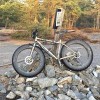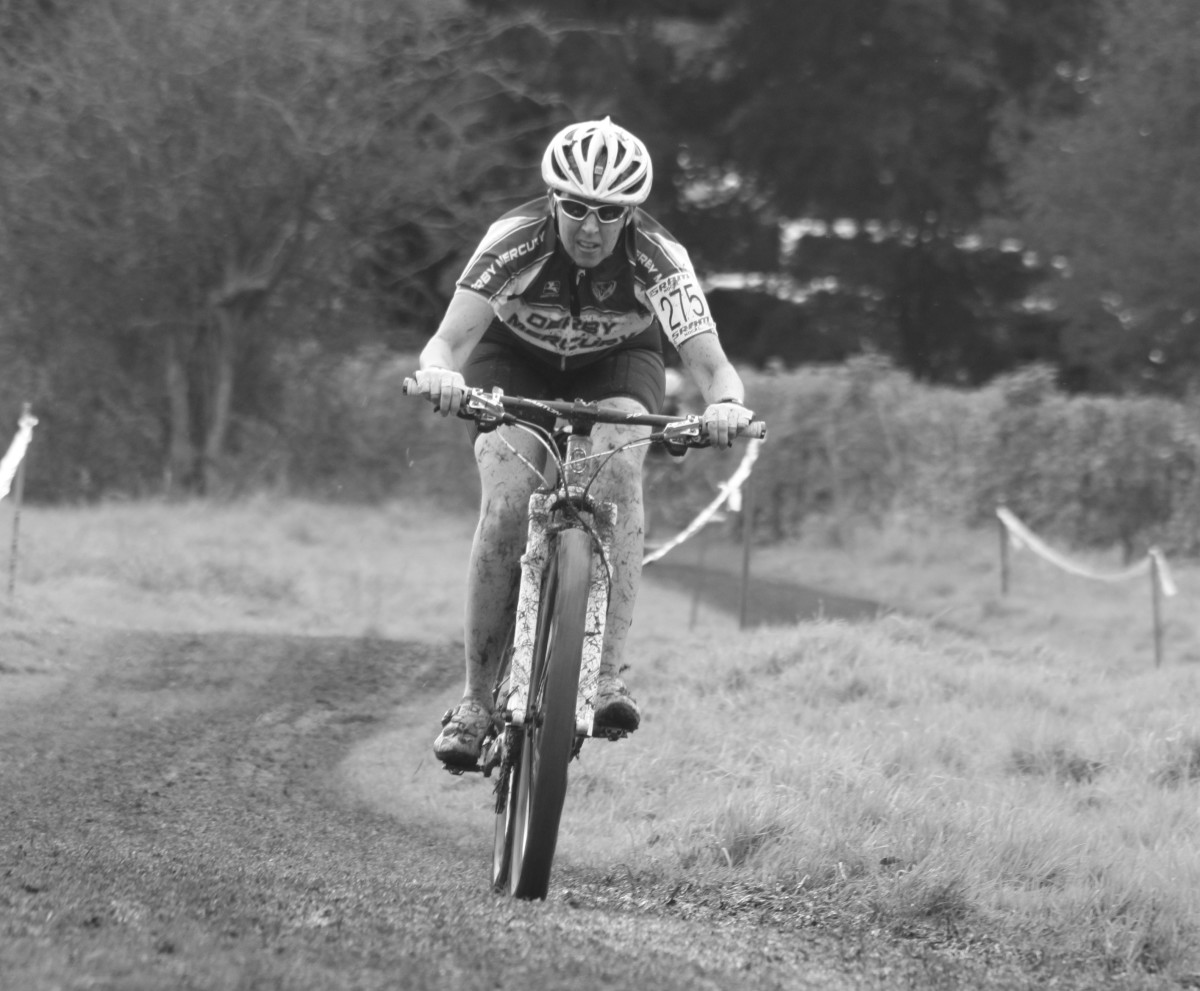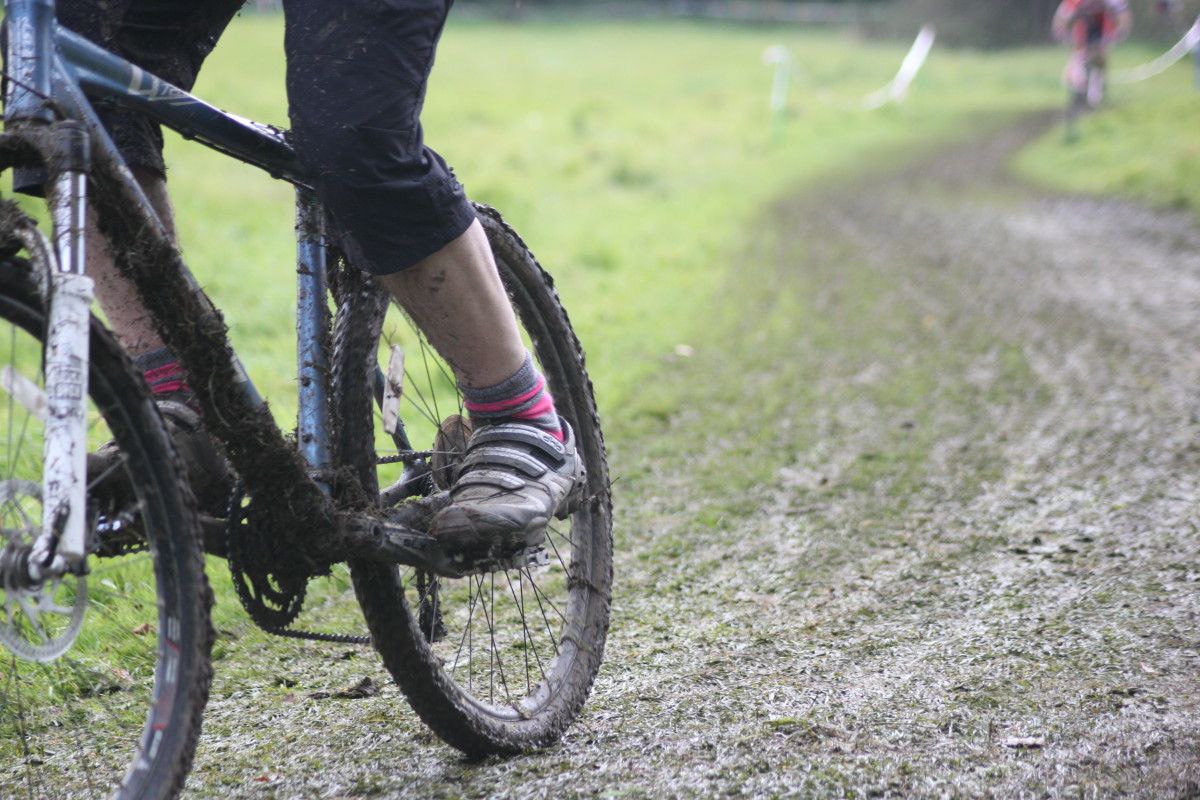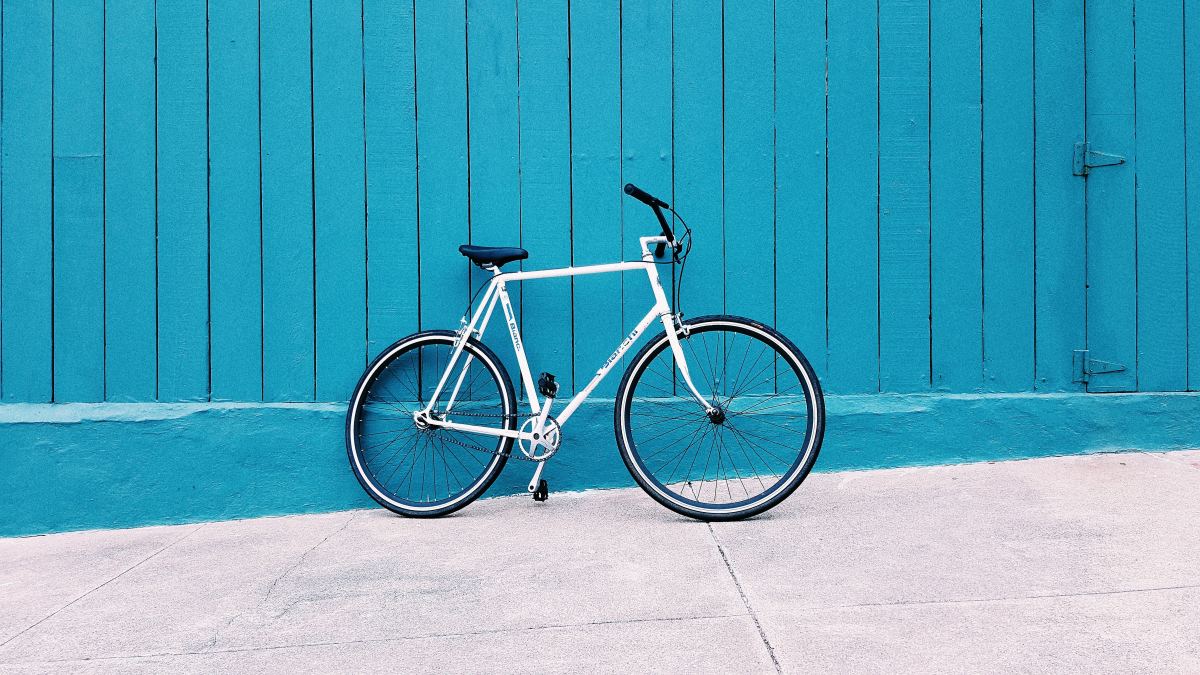Best Mountain Bike Tires for Mud
Good Mud Tires Have Big Knobs
A good mud tire will have big, widely spaced knobs. This allows the tire to shed mud after riding through it.
A good example of a tire that performs well in mud is the Maxxis High Roller series. It's a beefy tire that can survive the punishment of running at lower than normal pressure for additional traction. And it grips like crazy on mud, wet roots, and wet rocks. It's a local favorite where I ride, and I find that the traction is better than the Ardent.
The only real downside to the High Roller (and other decent mud tires, for that matter) is the additional weight from the extra knobs. But when you're having fun, you don't count grams.
And one more thing, since we're talking mud tires - hopefully you're respecting the trails and not riding when it's super soft and wet. That's never a good thing. At the very least, take the driest lines you can and ride a wide tire to minimize trail damage.
High Roller - Solid mud and Enduro tire (a little hefty, too)
Myth: Mud tires have to be skinny
Some people say that a mud tire should be skinny to be able to cut through to hardpack underneath. And maybe that's true for some riding conditions. But when your mud also comes with a healthy dose of roots and loose rocks, skinny tires perform worse than average.
It's okay to ride a fat, enduro style tire in mud. Just remember that you want big knobs for gripping. In a lot of cases, a tire that does great in loose snow will also do great in mud.
Where I'm getting at is that fat bikes are wonderful in the mud. The Surly Bud and Lou tires grip like crazy, as well as going a long way toward dispelling the myth that a mud tire has to be thinner than average.
Lower Your Air Pressure
Let out some air when you ride in the mud. Chances are, you'll appreciate the additional grip you get when your tire has more give.
I ride a lot in Hellas, just outside Stockholm, which has conditions very similar to those you'd find in New England: spring mud, slippery rocks, and roots ready to wash out wheels. The key to making it through that kind of terrain with a smile on your face is being willing to play with lower air pressures.
I'm not going to tell you what pressure you have to run. It depends on your weight, riding style (finesse), and level of comfort with some added rolling resistance.
I weigh around 150 pounds suited up and run about 20-22psi in my rear tire, and 18 psi in my front tire. This is WITH tubes and 26x2.2 tires. I haven't pinch flatted in over a year (knock on wood.) The trick is to ride with a lot more finesse, but that's for an entirely different article.
I know two other guys who weigh at least 15 pounds more than I do, and they run about 18psi front and rear on their 29ers with 2.3 inch rubber.
Riding Tips For Mud
- When you approach a mud section at speed, try to unweight your front wheel slightly. This will reduce your chances of having your front wheel sink in deep and send you over the bars.
- The name of the game is finesse. Even with big knobs and low air pressure, try to use both natural momentum and pedaling to get through a mud section.
- If you find yourself bogging down, try pedaling with a slightly harder gear and keeping even pressure on the pedals. An easier gear will put more torque on the rear wheel and increase your chances of spinning out.
- If there's a dry line, take that instead. It's not cool to leave big ruts in the trail just because you can.
Test Your Tires
I can't stress this enough - you need to test your tires on your trails. Everyone has a slightly different mix of conditions and riding styles.
A good place to start is looking at what all the locals ride, and starting there. It just so happens that the Swedish crew loves Schwalbe and Maxxis tires, with Continental coming in third. I've tested all three brands of tires at different times of year and found that some work better than others.
For instance, some tires deform more at low air pressures than others. Others deform but still don't increase rolling resistance too much.
When you're trying to figure out what tires work for you, one strategy is to buy the slightly heavier (and less expensive) wire bead versions until you find a tire you love. Then you can wear it out and make the next one a folding, kevlar bead version, if you want.
So ride! And test. That's how you'll figure out which tires are best for your riding.






